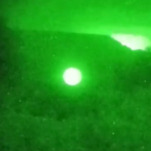Maybe crickets aren't the food of the future, after all
Among a certain kind of food-futurist-nerd, it’s accepted wisdom that crickets and grasshoppers might be the protein source of the next generation. There are 30—thirty!—startups in North America focused on commercializing crickets for food.
Of course, people all over the world have long eaten insects. Chapulines, for example, are a common enough Mexican (and Mexican-American) snack. But we’re not talking about a artisanal revival of a folk food tradition here. This is a much bigger idea: namely, that humans would shift their diets away from eating chickens and pigs and cows, and start munching on insects.
A key function of any food system is to provide the protein humans need. This can be, as with cows, a highly inefficient process. It takes a lot of water and animal feed to create a given amount of edible beef. Carp, as a counterexample, are much more efficient at converting the food they eat into edible body mass.
And crickets, say esteemed organizations like the Food and Agriculture Organization at the United Nations, are really, really good at converting plants to protein. “Crickets need six times less feed than cattle, four times less than sheep, and twice less than pigs and broiler chickens to produce the same amount of protein,” reads one FAO factsheet.
-

-

-

-

-

-

-

-

-

-

-

-

-

-

-

-

-

-

-

-

-

-

-

-

-

-

-

-

-

-

-

-

-

-

-

-

-

-

-

-

-

-

-

-

-

-

-

-

-

-

-

-

-

-

-

-

-

-

-

-

-

-

-

-

-

-

-

-

-

-

-

-

-

-

-

-

-

-

-

-

-

-

-

-

-

-

-

-

-

-

-

-

-

-

-

-

-

-

-

-

-

-

-

-

-

-

-

-












































































































